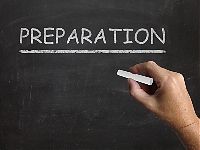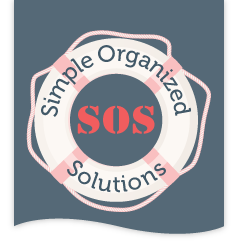 Since September is National Preparedness Month, and hurricane season is in full swing, I decided to tweak a previous newsletter article that discussed weather emergencies for this month.
Since September is National Preparedness Month, and hurricane season is in full swing, I decided to tweak a previous newsletter article that discussed weather emergencies for this month.
In 2004, this month was designated to review our state of preparedness and make adjustments accordingly. These adjustments are not only for our home & family, but for our businesses and communities as a whole. This means being prepared for a range of emergencies such as home fires, and natural disasters to terrorist attacks. Staying informed of current events is critical to be prepared for these types of emergencies. Cell phones, computers and the Internet all play important roles to keep us aware of these events as they unfold.
Emergencies can occur at any time, so a preparedness plan needs to account for where you are when it happens. Obviously you cannot plan for every situation you find yourself in when it could happen, but you can make a general plan and keep supplies in different locations to cover the bases. Consider the places you are most likely to be, such as at home, your workplace, and your vehicle. If you have your preparedness kit in your home and you are out and cannot get home, you will not be able to access your supplies. So, it makes sense to keep supplies in different locations.
All family members need to be a part of this plan.Requirements for each member, including pets, need to be included in the plan. There are 2 elements for emergency preparedness, the plan and supplies. The lists below will get you started on your path to emergency preparedness but is not all inclusive. For additional information, visit the Readywebsite and stay safe!
The Plan:
• Communications – This should be first and foremost on your plan. All family members need to know that everyone is safe and their location. Cell phones are a great tool for this, since these days it seems that most of us have them, including children.
• Gathering Place – This is next on the plan. Determine a central location for everyone to meet – right outside your house, in case of fire, and 2 nearby locations such as a school, park, religious building or shopping mall, in case the emergency will not allow you to get back home.
• Action Steps – Document the action steps to take when an emergency has been declared. These steps will be different depending on the emergency, so state the emergency situation, then the appropriate action steps to take.
• Practice – Practice makes perfect and practicing the plan will keep it fresh in your mind should an emergency occur.
Supplies:
• Water – This is the most important supply, as it is not only used for drinking, but also for cooking and sanitary needs. The guideline is to keep 1 gallon of water per person per day. This isn’t always easy if you are short on storage space. Store what you can, because a small amount is better than none.
• Food – If you are sheltering in place, consume the fresh food first since it won’t last as long. After that supply is exhausted, use canned and boxed foods. To stretch your water supply, use the water from the canned foods to prepare the boxed foods.
• Vital records & medicines – Keep vital records & medicines for each family member, including pets, in a portable carrier handy to grab as you are leaving your home.


